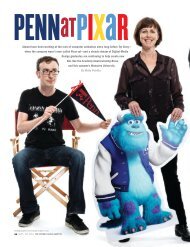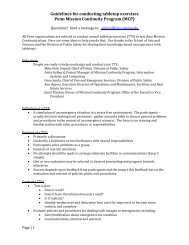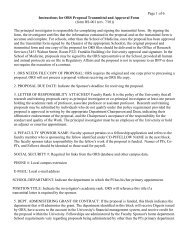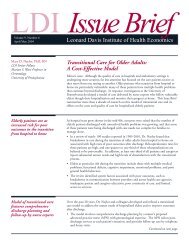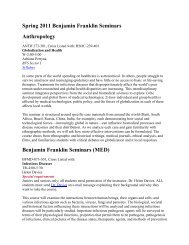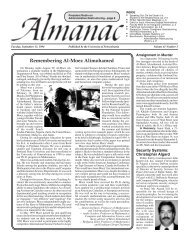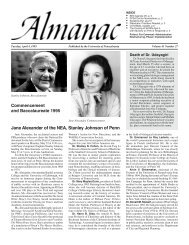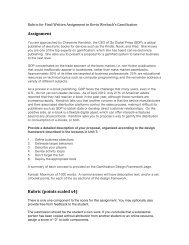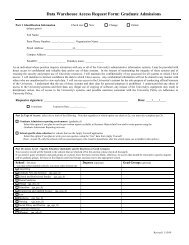Download this article (PDF) - University of Pennsylvania
Download this article (PDF) - University of Pennsylvania
Download this article (PDF) - University of Pennsylvania
Create successful ePaper yourself
Turn your PDF publications into a flip-book with our unique Google optimized e-Paper software.
“We still need those facilities. We don’t have certain things<br />
that we need out on <strong>this</strong> site to make it a sustainable destination.<br />
So the idea <strong>of</strong> going back to these original ideas and<br />
reintroducing them is a great place to start.”<br />
Which brings us back to the Architectural Archives. If you don’t<br />
use the Kahn Collection for a project like <strong>this</strong>, says Whitaker,<br />
“why have <strong>this</strong> stuff in the first place? A collection like <strong>this</strong> is<br />
our cultural heritage. It’s part <strong>of</strong> how we understand what it is<br />
to be a great architect, to make great architecture—and what<br />
Lou Kahn and his collaborators did to make it work.”<br />
“Bill was a bridge <strong>of</strong> interpreting,” says School <strong>of</strong> Design Dean<br />
Marilyn Taylor. “He deserves incredible praise for his very quiet<br />
but learned and persistent application <strong>of</strong> what he knew to help<br />
us move through from what we had, to what should happen. And<br />
he’s gotten acknowledgment for it, but maybe not enough.”<br />
Back in the Architectural Archives, I ask Pattison how<br />
she felt that rainy day in October when, after all the<br />
dread and all the anxiety, she finally had a chance to<br />
see the memorial that Kahn had first envisioned, with her<br />
help, nearly 40 years before.<br />
“Oh, amazement that <strong>this</strong> was built,” she says. “Really astonishment.<br />
And going to the Room was wonderful.” The sight <strong>of</strong><br />
the great granite blocks, so artfully placed, suddenly made her<br />
remember Kahn’s famous dictum: Consider the momentous event<br />
in architecture when the wall parted and the column became.<br />
She was delighted to see that “the big moves are there—the<br />
arrival and the steps and then suddenly the perspective and<br />
walking through trees down to <strong>this</strong> wonderful thing,” she adds.<br />
“It was marvelous, in the rain. It was beautiful, really. Bill gave<br />
a wonderful introduction and description <strong>of</strong> its making. And<br />
it was wonderful to see people from Penn, a couple <strong>of</strong> whom<br />
had participated and worked in Lou’s <strong>of</strong>fice.”<br />
At the very end <strong>of</strong> our long interview, Nathaniel suddenly<br />
asks a question <strong>of</strong> his mother that pulls her up short. “Did<br />
you miss Lou, when you went to Roosevelt Island? Did you<br />
think about him?”<br />
A pregnant silence follows.<br />
“That’s quite a question,” she says. “I don’t know really what I felt.<br />
I was just very anxious and very curious and very worried.”<br />
“Well, you were carrying that with you for him, in a way,”<br />
Nathaniel suggests. “You were worried for him, too.”<br />
Harriet Pattison looks up then, and the little cloud <strong>of</strong> uncertainty<br />
that had been hanging over her dissipates.<br />
“Well, when I got to the end, and people had disappeared,<br />
and I was right there, alone, I thought about him,” she says<br />
finally. “There was nobody there then. And I felt wonderful.<br />
He did it.”◆<br />
THE PENNSYLVANIA GAZETTE MARCH | APRIL 2013 49



